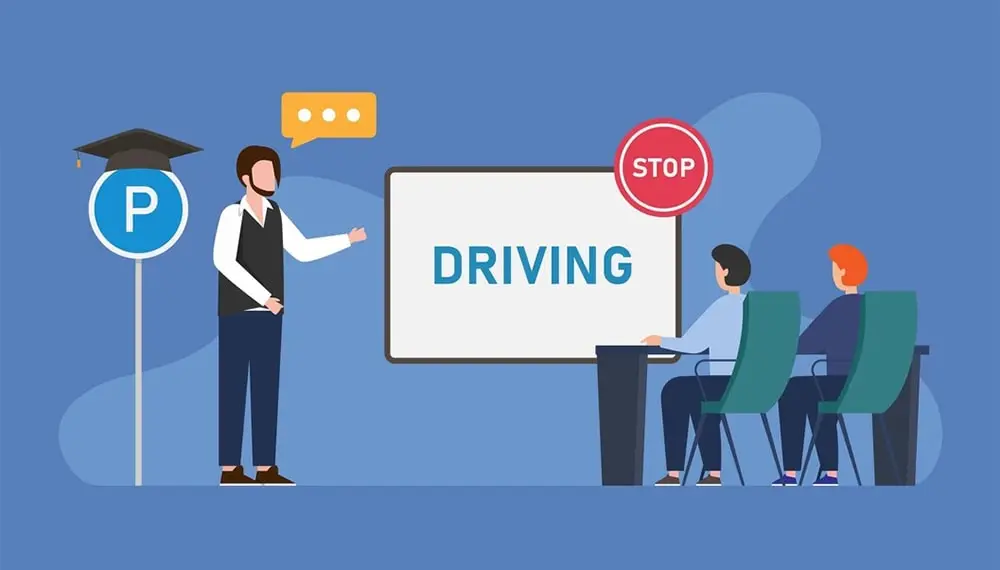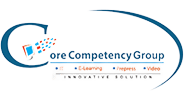How to Create a Learning and Development Strategy That Drives Results
Rohit Kumar
17 Jan, 2025

In today’s competitive landscape, where rapid technological advancements and shifting workforce dynamics are the norm, a high-impact Learning and Development (L&D) strategy has become indispensable for organizations striving to maintain an edge.
The ability to reskill and upskill employees is no longer a luxury—it’s a necessity for navigating market disruptions, meeting customer expectations, and fostering innovation. Yet, developing an effective L&D strategy is about creating a cohesive, measurable framework that aligns individual growth with organizational objectives.
When done thoughtfully, L&D initiatives can reduce talent turnover, build future-ready leaders, and ensure every employee contributes to the company’s strategic vision. The challenge lies in transitioning from ad hoc training sessions to a structured, intentional approach that delivers tangible results. This article explores how to craft an L&D strategy that drives performance and nurtures a culture of continuous learning.
Defining a Learning and Development Strategy
A Learning and Development (L&D) strategy is a structured plan designed to align employee training initiatives with an organization's broader goals. It serves as a blueprint for enhancing workforce capabilities, ensuring employees possess the skills and knowledge necessary to meet current and future challenges. Unlike isolated training programs, an L&D strategy takes a comprehensive and long-term approach, weaving learning into the fabric of an organization’s culture.
At its core, an effective L&D strategy bridges the gap between business objectives and employee performance. It focuses on identifying skill gaps, fostering employee engagement, and enabling career growth while addressing organizational priorities such as innovation, customer satisfaction, and operational efficiency. It’s not merely a collection of courses or workshops but a systemic approach integrating diverse learning modalities—from in-person training and e-learning to mentorship programs and experiential learning.
For organizations, a well-defined L&D strategy has multifaceted benefits. It equips employees to adapt to rapidly changing industry landscapes, supports leadership development, and enhances workforce productivity. It also fosters a sense of belonging and purpose, as employees see a clear investment in their growth and development. Ultimately, an L&D strategy is a strategic enabler, driving individual and organizational success in an increasingly dynamic world.
A Practical Guide to Crafting a High-Impact Learning and Development Strategy
Creating an effective Learning & Development (L&D) strategy requires thoughtful planning, a clear understanding of business needs, and a commitment to measurable outcomes. Below is a step-by-step guide to creating a L&D strategy:
1. Align Training with Organizational Goals
An impactful L&D strategy starts with alignment. Evaluate your company’s strategic objectives and identify how employee development can contribute to achieving these goals. For instance, if your organization expands into new markets, your L&D focus might include cross-cultural communication and global leadership training.
Key Actions:
- Meet with senior leadership to understand strategic priorities.
- Map critical business goals to required workforce skills and competencies.
- Ensure L&D initiatives address both short-term needs and long-term objectives.
2. Conduct a Comprehensive Needs Assessment
To create relevant training programs, thoroughly analyze your organization’s current capabilities and future requirements. This includes identifying skill gaps, assessing industry trends, and understanding employee aspirations.
Key Actions:
- Use surveys, interviews, and performance reviews to gather data.
- Analyze workforce trends to anticipate emerging skill demands.
- Collaborate with managers to identify department-specific training needs.
3. Design Engaging and Tailored Learning Programs
Generic training programs often fail to deliver results. Customization ensures that learning initiatives resonate with employees and address specific challenges. To cater to diverse learning styles, use a blend of learning formats, from interactive online modules to hands-on workshops.
Key Actions:
- Develop personalized learning paths based on roles and career stages.
- Leverage microlearning techniques to break complex topics into manageable modules.
- Include practical, real-world applications to reinforce knowledge.
4. Leverage Technology for Scalable Learning
Modern L&D strategies increasingly rely on technology to enhance access, flexibility, and scalability. Learning Management Systems (LMS), virtual reality simulations, and AI-driven platforms can help deliver engaging and data-driven training.
Key Actions:
- Choose an LMS that integrates seamlessly with your existing systems.
- Experiment with gamification to increase learner engagement.
- Use analytics to track participation, progress, and performance.
5. Foster a Culture of Continuous Learning
A high-impact L&D strategy goes beyond structured training sessions; it embeds learning into the organization’s culture. Encourage employees to take ownership of their development & create an environment where knowledge-sharing and curiosity thrive.
Key Actions:
- Offer mentorship and coaching opportunities.
- Recognize & reward employees who demonstrate commitment to learning.
- Encourage cross-departmental collaboration and knowledge exchange.
6. Evaluate Impact and Iterate Regularly
No strategy is complete without measurement. Assessing the effectiveness of your L&D initiatives helps identify what’s working & what needs improvement. Use this data to refine your approach and ensure alignment with evolving business needs.
Key Actions:
- Define clear metrics such as skill acquisition, performance improvement, and employee retention.
- Conduct regular feedback sessions with participants and stakeholders.
- Continuously adapt training programs to reflect technological advancements and industry shifts.
Developing Engaging Training Content
Here's how organizations can ensure their training content captivates and benefits employees:
1. Understand Your Audience
Training content must be tailored to your employees' needs, preferences, and skill levels. Generic content can feel irrelevant and disengaging, while personalized material keeps learners invested.
Actionable Steps:
- Conduct surveys or interviews to understand employees' learning preferences.
- Segment your audience by job role, experience level, and career goals.
- Incorporate scenarios and examples directly related to the learners' daily tasks.
2. Make Content Relevant and Practical
Employees are likely to engage in training that directly applies to their work. Practical, real-world examples and scenarios help learners see the value of the content and how it connects to their roles.
Actionable Steps:
- Use case studies, role-playing exercises, or simulations that mimic employees' challenges.
- Include actionable takeaways that can be immediately applied to their work.
- Regularly update content to reflect new processes, tools, or industry trends.
3. Incorporate Varied Learning Formats
Employees have different learning preferences, so incorporating multiple formats can make training more accessible and engaging. Combining traditional and modern methods ensures that learners stay motivated and interested.
Actionable Steps:
- Use videos, infographics, and animations to simplify complex topics.
- Create interactive elements such as quizzes, drag-and-drop activities, or branching scenarios.
- Offer blended learning options that combine online modules with in-person sessions or workshops.
4. Use Storytelling Techniques
Storytelling is a powerful way to make content memorable and relatable. Stories help simplify complex concepts and create an emotional connection with learners.
Actionable Steps:
- Frame training content around real-life success stories or relatable challenges.
- Use characters and narratives that align with the organizational culture.
- Highlight the impact of learned skills on personal and professional growth.
5. Leverage Gamification
Gamification introduces game-like elements into training to make learning more enjoyable and competitive. It increases motivation by rewarding progress and achievements.
Actionable Steps:
- Include elements like badges, leaderboards, and rewards for completing tasks.
- Design challenges or scenarios that encourage friendly competition.
- Track and celebrate milestones to sustain engagement over time.
6. Keep Content Bite-Sized and Focused
Employees often juggle training with their regular responsibilities, making it critical to keep sessions concise. Bite-sized content, or microlearning, ensures learners can consume information quickly and effectively.
Actionable Steps:
- Break down training modules into short, focused lessons that last 5–10 minutes.
- Use one topic per session to avoid overwhelming learners.
- Allow learners to access content on-demand for flexibility.
7. Continuously Gather Feedback and Iterate
Engaging content isn't static—it evolves based on learner feedback and organizational needs. Regular assessment and updates ensure content remains relevant and impactful.
Actionable Steps:
- Include feedback mechanisms, such as surveys or quick polls, after training sessions.
- Monitor completion rates, engagement levels, and test scores to gauge effectiveness.
- Revise and improve content based on feedback and emerging trends.
Core Competency Is the Partner for Your Employees' Skill Growth Journey
At Core Competency, we understand that a successful Learning & Development strategy requires more than just great ideas—it demands the right tools and support to bring those ideas to life. Our cutting-edge Learning Management System (LMS) and comprehensive L&D solutions are designed to empower organizations to easily create, deliver, and manage impactful training programs. Whether personalized learning paths, seamless content delivery, or actionable analytics, our products ensure that every aspect of your L&D strategy aligns with your organizational goals.
Partner with Core Competency to transform employee development into a competitive advantage and build a workforce ready to meet today's and tomorrow's challenges.




